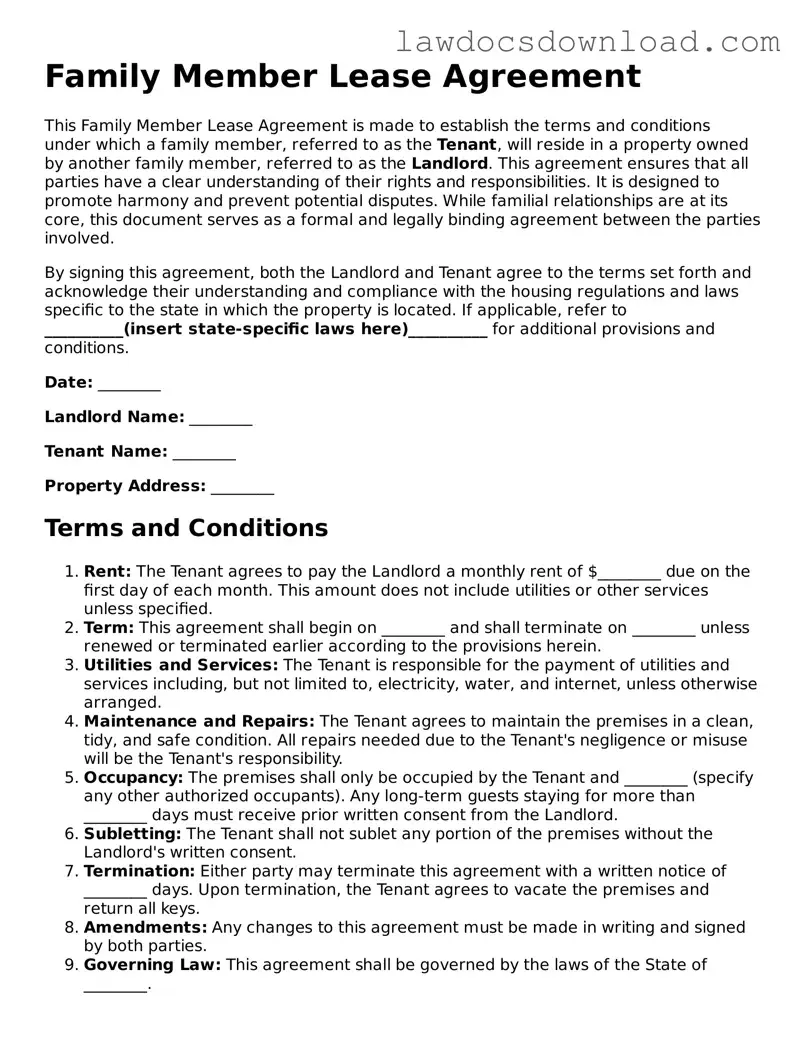A Residential Lease Agreement is similar to a Family Member Lease Agreement as both establish a legal relationship between a landlord and tenant, defining terms concerning rent, property use, and duration. However, the Family Member Lease Agreement might include more flexible or favorable terms for the family member tenant, recognizing the personal relationship involved.
A Sublease Agreement also shares commonalities with a Family Member Lease Agreement, as it permits an original tenant to rent out their rented space to another individual. This scenario could occur within a family, where a member who holds a lease decides to sublet to another family member, often with similar conditions found in a direct lease with a family member.
Roommate Agreements are akin to Family Member Lease Agreements, focusing on the cohabitation of individuals in a shared space. They outline responsibilities regarding rent, utilities, and other obligations. In a family context, such an agreement might be used to formalize the expectations and duties of each family member residing together, even if the property ownership is within the family.
Property Management Agreements bear resemblance in that they set terms between a property owner and the entity or individual managing the property on their behalf. In a family scenario, a Family Member Lease Agreement may act similarly if a family member is entrusted with managing the property and facilitating the leasing process to another family member, blending familial dynamics with property management roles.
A Rent-to-Own Lease Agreement lays out the conditions under which a tenant can purchase the rental property over time. This concept could be integrated into a Family Member Lease Agreement, offering a family member the opportunity to eventually own the home they are renting, often with terms that are more generous than market standards.
Commercial Lease Agreements, while primarily for business purposes, share the foundational principles of leasing property as found in Family Member Lease Agreements. The distinction often lies in the application of these agreements to different contexts—commercial for business tenancies and family lease agreements for residential arrangements within a family.
A Vacation Rental Agreement is another similar document that temporarily establishes the terms for renting a property for holiday purposes. When family members rent property from one another for vacation use, the agreement may resemble a Family Member Lease Agreement, albeit for shorter durations and possibly with more casual or relaxed terms considering the family relationship.
Lastly, an Eviction Notice, while not an agreement, is a legal document that might be necessary if the terms of a Family Member Lease Agreement are violated. It formalizes the process for terminating the lease and requiring the tenant to vacate the property. While it’s a step most would hope to avoid, especially within a family, it shows the legal backbone supporting even familial rental arrangements, ensuring that all parties are aware of their rights and responsibilities.
